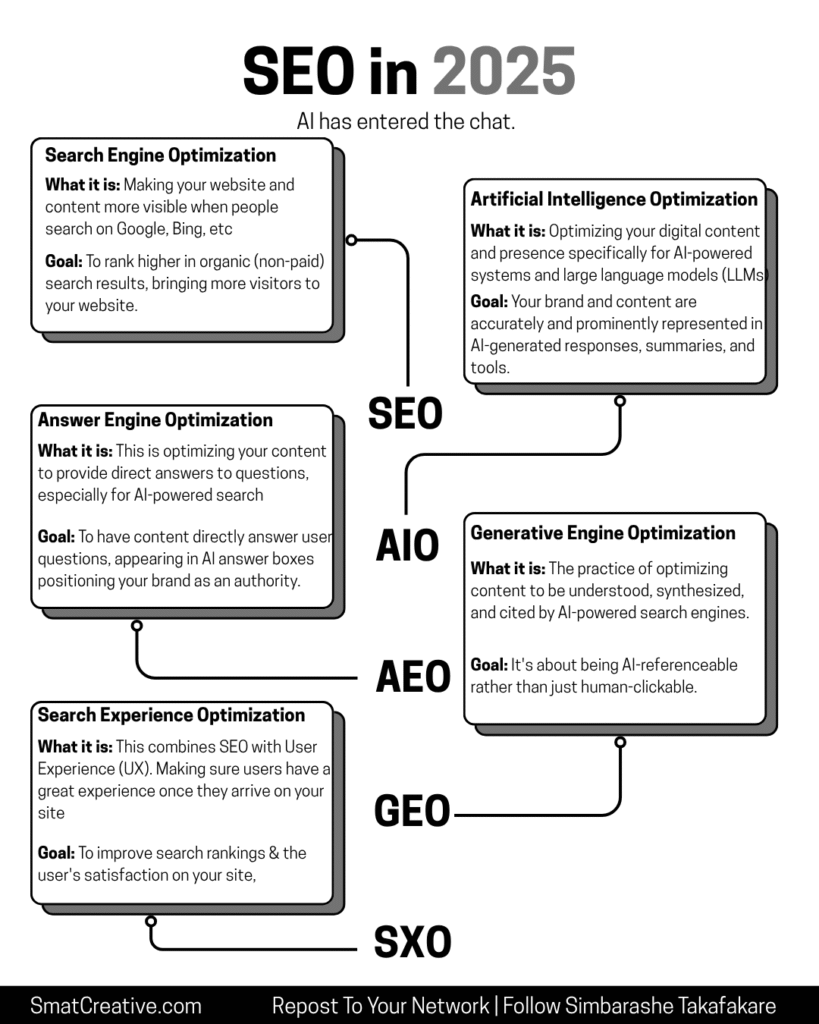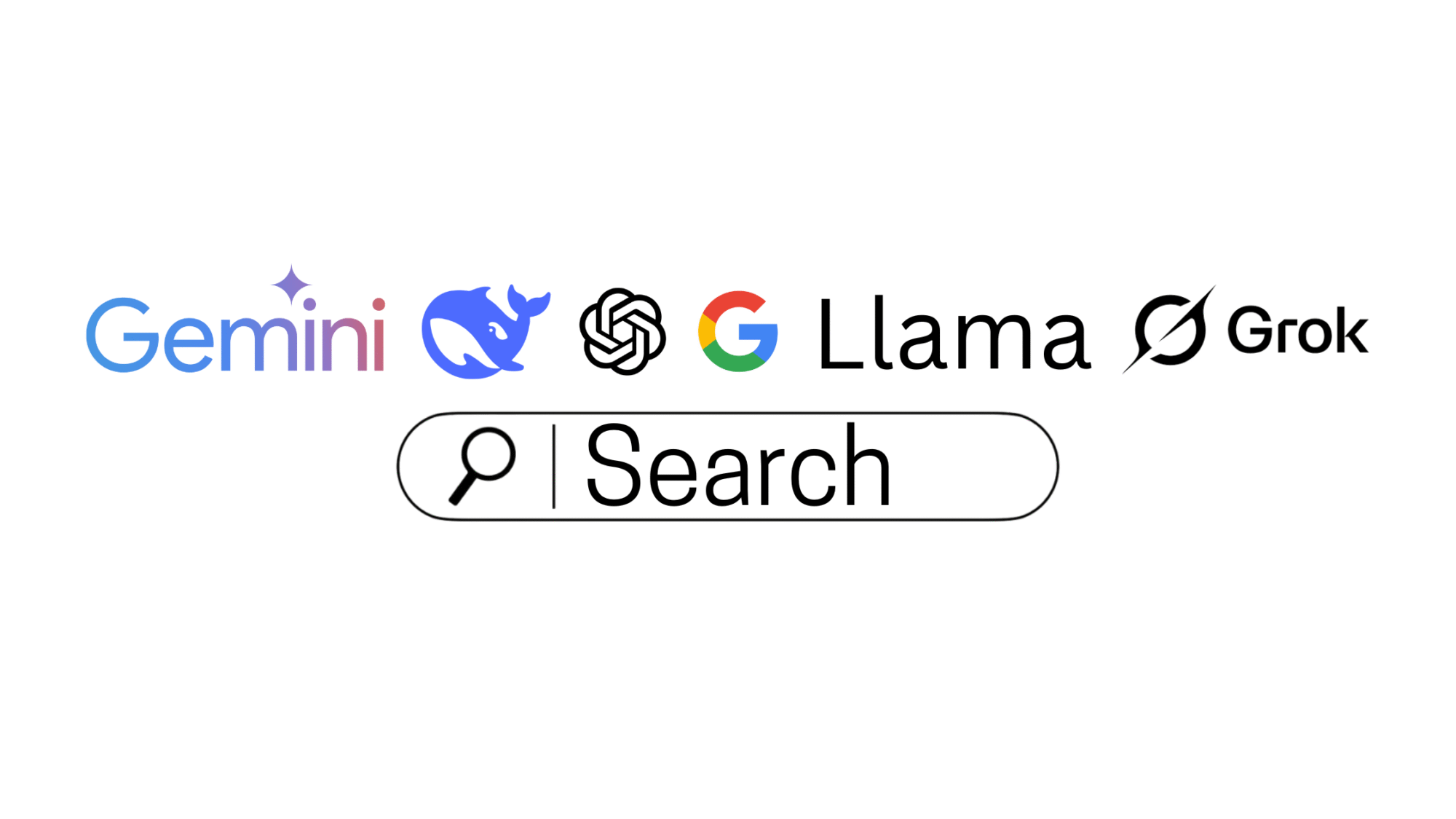For decades, search has revolved around keywords. However, 2025 is rewriting the playbook. The way people search and the technology powering those results are undergoing a seismic shift, led by artificial intelligence. AI search, generative engines, and conversational interfaces are redefining how users discover information, and as a result, brands must rethink their visibility. From Google’s Search Generative Experience (SGE) to ChatGPT’s browsing mode, we’re entering a new era that favors context, conversation, and intent over keyword stuffing and traditional SEO.
This article explores how AI is transforming search, what it means for marketers, and how you can adapt.
AI Search: From Links to Answers
As AI-driven search evolves, marketers are adopting a new wave of optimization strategies that go beyond traditional SEO. Answer Engine Optimisation (AEO) focuses on structuring content to deliver direct, concise answers for platforms like ChatGPT, Google’s SGE, and Perplexity AI, where user queries no longer yield just links, but complete answers. Closely related is Generative Engine Optimisation (GEO), which adapts content strategies for generative AI tools that summarise or synthesize information from multiple sources, often without sending traffic back to the original sites.
These shifts are driving the rise of AI Optimisation (AIO), a broader discipline that includes optimizing content for large language models (LLMs), improving prompt response relevance, and even training custom AI to align with brand knowledge. Complementing these is Search Experience Optimisation (SXO), a strategy that combines SEO with user experience (UX) design principles, ensuring not just visibility, but high engagement and conversion across both classic and AI-driven search journeys.

Traditional search engines like Google and Bing were built to return links. The user entered a keyword, and the engine matched it with indexed pages, displaying results ranked by relevance and authority. But AI search models are doing something fundamentally different, they aim to understand intent, synthesize content, and deliver answers directly. Instead of ten blue links, users now see AI-generated summaries, conversational responses, or cited answers pulled from multiple sources.
Google’s SGE integrates generative AI into the search experience, providing AI snapshots at the top of results pages. These AI overviews answer the question, cite sources, and link to deeper insights, often before the user even clicks anything. This has deep implications for SEO and content marketing.
Google’s SGE
Google has been testing SGE (Search Generative Experience) since mid-2023. The feature uses generative AI to create concise responses to user queries, pulling in data from indexed web pages, structured data, and even user intent signals. In a recent piece by Search Engine Land, SGE was shown to reduce the need for users to click through multiple results. It also promotes a more interactive experience, where users can ask follow-up questions without restarting the search process. Google is essentially becoming not just a search engine, but a research assistant. This changes the game for publishers and marketers who rely on organic clicks. As more answers appear above the fold in AI snapshots, traditional SERP real estate shrinks.
ChatGPT, Perplexity, and the Rise of AI Browsers
It’s not just Google. Tools like Perplexity AI and OpenAI’s ChatGPT with browsing capabilities offer a radically different search interface. Instead of navigating to websites, users ask questions and receive full answers, including citations and conversational clarifications. These new AI-native interfaces bypass the conventional funnel. Rather than clicking from site to site, users stay in a single environment, reducing bounce rates, but also cutting out pageviews. Perplexity, in particular, is making waves with its AI-generated answers backed by live citations. It’s like combining the speed of a search engine with the context of a research paper. This trend is being dubbed answer engines, platforms optimised not for navigation but for explanation.
What This Means for SEO
As AI reshapes search, marketers must reimagine SEO beyond the typical on-page checklist. Here’s what’s changing:
- Less Emphasis on Ranking, More on Relevance
With AI generating answers from multiple sources, being ranked #1 might matter less than simply being cited within the response. Visibility now requires semantic clarity and topical authority. - Shift from Keywords to Concepts
AI search interprets intent, not just exact match keywords. Content must be structured around user journeys, answering related questions, and offering layered context. - Content Structure and Formatting Matter More
Content that is formatted (using headings, bullet points, and FAQs) is more likely to be understood and pulled by AI models. - Schema Markup and Structured Data Are Critical
AI needs clean signals to understand your content. Structured data, such as schema.org tags, helps machines categorise and interpret page content accurately. - Trust and E-E-A-T Signals
Google’s ranking still relies on expertise, experience, authority, and trustworthiness (E-E-A-T). With AI citing sources, sites with high authority and credibility will have an edge.
AI and the New Content Game
Content marketing must evolve in tandem with AI search. Brands should:
- Create deeper content that answers questions thoroughly.
- Use natural language and full-sentence queries within posts.
- Integrate FAQs, summaries, and conversational tones.
- Focus on topical clusters rather than siloed blogs.
- Prioritise sourceable, factual writing, because AI now cites you.
In other words, your content must be written not only for humans but for AI summarisation models too.
Voice Search and Multimodal Interfaces
Another dimension of AI search is the move toward voice and visual inputs. Search queries are increasingly spoken, and tools like Google Lens enable visual search. AI-powered engines interpret these inputs in real time, connecting them with relevant content. For example, searching with an image of a product may now return detailed descriptions, pricing, and purchase options, all without typing a word. Marketers must now optimise for non-textual inputs, ensuring that images are tagged, videos are transcribed, and brand assets are AI-friendly.
The Implications for Brands and Marketers
The age of AI search is still unfolding, but it’s already clear that the old rules are breaking. Brands can no longer just rely on keyword targeting and backlinks. They must become trusted sources in their niches, optimise for meaningful engagement, and adapt content for AI interpretation.
Marketing strategy must now ask:
- Can AI understand our content?
- Are we structured enough to be cited?
- Is our content valuable enough to stand out in a summarised answer?
As search continues its AI evolution, those who adapt early will reap the visibility rewards. Those who cling to old SEO playbooks may find themselves buried beneath the fold.
Lastly
Search is no longer just about being found. It’s about being understood, summarised, and cited by machines. The rise of AI search is creating both disruption and opportunity. To stay ahead, brands and marketers must embrace a content strategy that’s clear, structured, trustworthy, and designed with AI readers in mind. The future of search isn’t keyword driven, it’s intent-driven, contextual, and intelligent. And it’s already here.

Pingback:Generative Engine Optimization: The Future of SEO - SmatCreative
Reading your article helped me a lot and I agree with you. But I still have some doubts, can you clarify for me? I’ll keep an eye out for your answers.